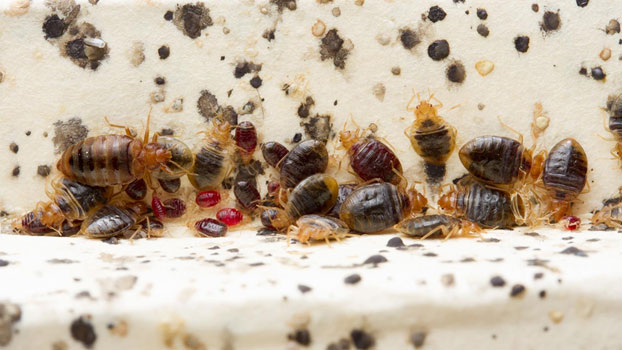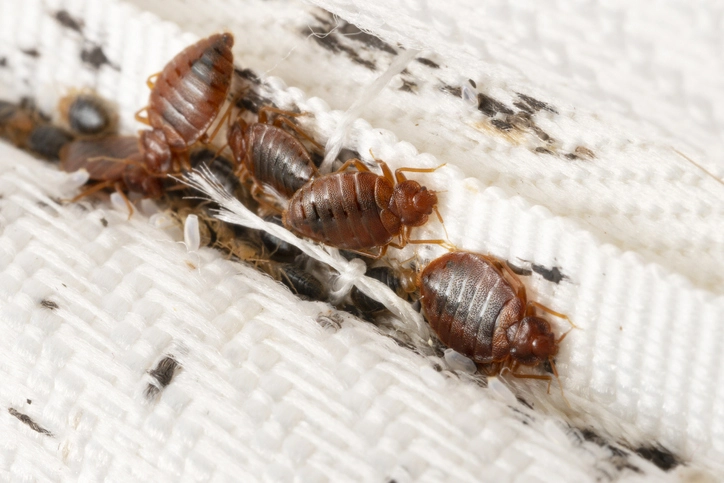A1 Bed Bug Exterminator Houston: Trusted Treatment Solutions
A1 Bed Bug Exterminator Houston: Trusted Treatment Solutions
Blog Article
Comprehending the Lifecycle of Parasites for Targeted Control Strategies
Understanding the lifecycle of parasites is a fundamental facet of effective pest administration strategies. Via a deeper understanding of exactly how pests prosper and advance, tailored control methods can be created to deal with specific points in their lifecycle, eventually leading to even more successful parasite administration results.
Relevance of Understanding Pest Lifecycle
Recognizing the lifecycle of insects is essential for developing effective and targeted control approaches in parasite management. By comprehending the different stages an insect goes via from egg to adult, pest control experts can recognize susceptible factors in the lifecycle where treatment can be most effective.
In addition, identifying the specific ecological problems essential for every stage of the parasite's lifecycle can guide choices on habitat alteration or exemption methods to interfere with the lifecycle and minimize pest populaces. This expertise enables pest management specialists to apply aggressive steps as opposed to depending entirely on responsive therapies, bring about even more lasting and sustainable pest control remedies. Eventually, a complete understanding of insect lifecycles empowers pest control professionals to customize their techniques effectively, maximizing and reducing ecological influences control end results.
Trick Phases in Bug Development
To properly apply targeted control strategies in pest monitoring, an essential element hinges on comprehensively identifying and recognizing the crucial stages in parasite advancement. Pest growth normally contains numerous essential phases that are crucial for their lifecycle and monitoring. The very first stage is the egg stage, where insects lay eggs that later hatch out right into larvae. Larvae then progress into pupae, a stage where they undertake transformation prior to emerging as adult parasites. Comprehending these stages is necessary as it assists in pinpointing susceptible factors in the lifecycle where control measures can be most effective.
Vulnerabilities in Pest Lifecycle
Throughout the different stages of a bug's lifecycle, distinct vulnerabilities arise that can be tactically targeted for effective control actions. One essential vulnerability exists in the egg phase, where parasites are typically a lot more at risk to particular insecticides or organic control representatives as a result of their soft outer covering, making them much easier targets for treatment. Additionally, the larval or nymph stage provides susceptabilities as bugs undergo rapid growth and development, calling for high power consumption that can be exploited by interrupting their food resources or presenting growth browse around this web-site preventions. Pupal stages, characterized by immobility and transformation, use a home window for targeted control through physical obstacles or details treatments that hinder effective introduction. Grown-up parasites, while much more durable due to their reproductive ability, can still be at risk during breeding or egg-laying activities, which can be interrupted with scent catches or sterilization techniques. Recognizing these susceptabilities in the bug lifecycle is necessary for establishing specific and efficient control strategies that properly manage bug populations while lessening environmental impact.
Executing Targeted Control Procedures

Executing targeted control measures typically entails a multi-faceted technique. This may consist of habitat alteration to make the environment less friendly to pests, such as eliminating standing water for insect control or securing access points for rats. Additionally, biological control approaches can be used, where all-natural killers or pathogens are presented to keep parasite populations in check.
Chemical control, such as the mindful application of chemicals, is one more usual strategy. It is vital to utilize these substances judiciously to decrease ecological impact and potential injury to non-target species - A1 bed bug extermination houston. Integrated Pest Monitoring (IPM) techniques that combine different control actions in a collaborated and lasting way are frequently the most effective in accomplishing long-term pest monitoring goals. By applying targeted control procedures based on an extensive understanding of pest lifecycles, bug populaces can be properly controlled while minimizing threats to human health and the atmosphere.
Enhanced Pest Administration Practices

Moreover, the about his incorporation of organic control agents, such as all-natural killers or microorganisms of pests, can help in reducing reliance on chemical pesticides and advertise an extra balanced ecological community. Applying physical obstacles and catches can also belong to improved bug monitoring methods, offering safe and targeted solutions for insect control. Additionally, making use of pheromones and various other semiochemicals can interrupt pest breeding patterns and interaction, causing lowered insect populations gradually.
Final Thought
By identifying essential phases in bug advancement and vulnerabilities in their lifecycle, targeted control steps can be implemented to decrease parasite populaces. Enhanced bug monitoring practices can help reduce the dependence on broad-spectrum pesticides and advertise even more environmentally pleasant and sustainable pest control methods.
Understanding the lifecycle of insects is important for developing reliable and targeted control approaches in bug monitoring. By comprehending the different stages a bug goes through from egg to adult, bug control experts can recognize vulnerable points in the lifecycle where intervention can be most successful. Eventually, a comprehensive understanding of insect lifecycles empowers bug control professionals to customize their strategies effectively, making the most of and decreasing ecological influences control outcomes.
By carrying out targeted control procedures based on a complete understanding of parasite lifecycles, insect populaces can be effectively managed while lessening risks to human health and wellness and the setting.
By identifying vital stages in insect development and susceptabilities in their lifecycle, targeted control actions can be carried out to minimize pest populaces.
Report this page